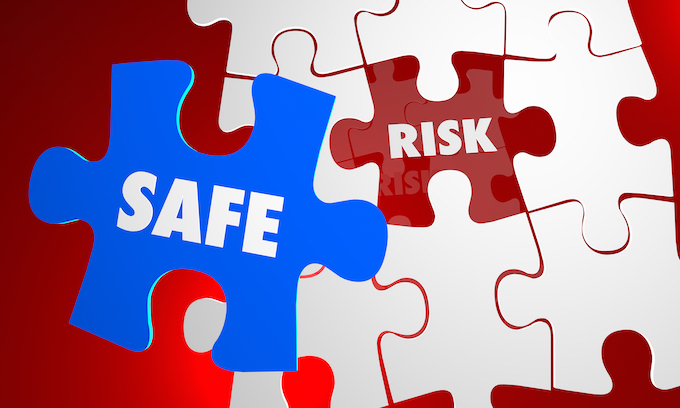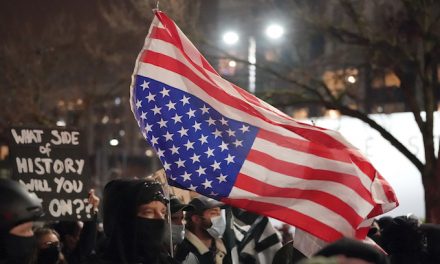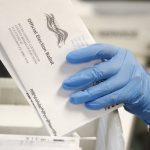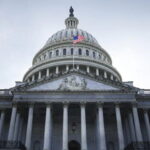A growing list of governors will open economies soon, knowing their actions may cost lives in the war on COVID-19. Welcome to society’s risk-reward dilemma.
“If any state, or any country, were to wait until we could keep everybody safe, we would have to be closed forever,” said Colorado Gov. Jared Polis, announcing plans for a phased-in reopening starting April 26.
His comment refutes the state’s coronavirus incident commander, who said the economy would stay closed until Polis could “make everyone safe.” As in, spare no expense to save every life possible.
Most human decisions balance the risk of death against potential reward. If eliminating the risk of death is of the highest order, consider the possibilities:
— Prohibit non-essential exposure to the sun. The lifetime odds of any individual dying of cancer are 1-in-7. Exposure to solar radiation is the fourth leading cause of the disease. If everyone stayed home with the exception of “critical” errands, we could greatly reduce the risk and the burden it causes society.
— Always forbid activities deemed “non-essential.” This would significantly reduce each individual’s 1-in-28 lifetime risk of dying in an accident, often in the course of routine activities involving the fault of others.
— Zone away stairs. This would substantially protect each American from the 1-in-122 lifetime chance of death by falling.
— Undo the right to own guns. A bullet can blindly strike any American almost anywhere at any time, just as a virus could enter that same person’s nose. An individual’s lifetime odds of getting assaulted by a gun are 1-in-315.
Nothing compares directly to a virus, but all deadly threats lead to risk assessment.
We’re learning more about the risks of COVID-19. A recent study by the Imperial College of London in the Lancet Infectious Diseases journal found a 20-something infected has a 1% chance of serious symptoms. Of that small group, an estimated 0.031% will die. The risk of serious symptoms rises to 8% for those infected in their 50s. It climbs to 19% for those stricken in their 80s and older. Among the most vulnerable Americans who contract the disease and suffer serious symptoms, the death rate goes up to 7.8%.
Accounting for all cases including those with mild symptoms, Imperial researchers estimate a death rate of 0.66% among those who contract the virus. The Centers for Disease Control estimates 90% who die from COVID-19 also suffer from serious co-conditions that exacerbate the dangers of multiple other illnesses and common activities.
The most recent modeling predictions from the University of Washington predict COVID-19 will culminate in 60,000 US deaths during what could be a one-season event.
No one should downplay this human carnage, but we must maintain perspective. The Centers for Disease Control estimates US flu deaths — for which we have vaccines — at 12,000 to 61,000 annually since 2010. Catching the standard flu means six months of immunity. Though the jury is out, researchers believe a mild case of coronavirus could establish up to 60 years of immunity.
We should strive to soon determine, using data and science, whether economic shutdowns might cost more lives than they save.
The economy’s partial closure had cost Americans 17 million jobs as of mid-April. The Bureau of Labor Statistics reports the share of newly unemployed in their prime working years of 25-54 dropped at a rate unseen since the Great Depression.
Shuttered businesses and the unemployed don’t fund governments. That means substantially less money for Medicaid and various other state-run programs designed to provide food, shelter and health care while the newly unemployed create unprecedented demand for assistance.
The federal government can print unlimited cash, but its value rests on the economy’s production. A glut of new capital chasing a dearth of goods and services in the midst and aftermath of a near-economic standstill will erode the value of assistance checks.
We cannot quantify the lives potentially saved by the shutdowns. We know for certain these measures mean sudden poverty for millions of paycheck-to-paycheck workers and small business owners. The New York Times cites analysts who fear 75% of independent restaurants won’t recover.
A 2011 study by Columbia’s Mailman School of Public Health found poverty causes 4.5% of premature annual deaths in the US. Young workers, those hardest hit by coronavirus layoffs, suffer the highest rate of adult poverty deaths. Poverty leads to stress, poor nutrition, substandard health care, mental health problems, escalating suicides, and more.
The Columbia researchers claim the “low education” byproduct of poverty causes more deaths than heart attacks. The shutdowns put 55 million American children out of brick-and-mortar schools. Expect negative effects, particularly among children from low-income homes who depend on schools for nutrition, emotional support, and social structure.
To make “everyone safe” — to save every life possible at any cost — we are swatting a deadly bug with a demolition mallet. We may destroy ourselves with unfathomable, deadly, long-term economic harm. We can only hope our leaders got this right.
___
(c)2020 The Gazette (Colorado Springs, Colo.)
Visit The Gazette (Colorado Springs, Colo.) at www.gazette.com
Distributed by Tribune Content Agency, LLC.
—-
This content is published through a licensing agreement with Acquire Media using its NewsEdge technology.



















Recent Comments